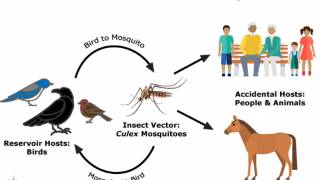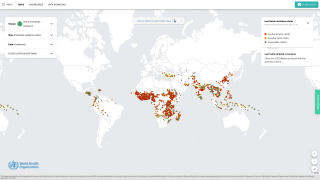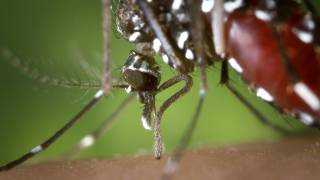West Nile Neuroinvasive Cases Increased 25% in 2018

According to a new report, West Nile Virus neuroinvasive disease incidence was nearly 25 percent higher in 2018, as compared to the past ten years.
This report published by the Centers for Disease Control and Prevention (CDC) on August 9, 2019, found in 2018, 48 states and the District of Columbia reported 2,813 cases of domestic arboviral disease, including 2,647 (94%) West Nile Virus (WNV) disease cases.
The largest number of West Nile cases were reported from California (154), Illinois (126), Nebraska (124), Texas (108), and Pennsylvania (95).
Of the West Nile disease cases, 1,658 (63%) were classified as neuroinvasive disease. Among the WNV neuroinvasive cases in 2018, 908 (55%) were reported as encephalitis, 542 (33%) as meningitis.
Furthermore, the West Nile virus continues to be a seasonal disease.
Approximately 93 percent of arboviral disease cases occurred between April–September in 2018, which is consistent with the peak trends in past years.
As of August 6, 2019, a total of 36 states have reported 128 cases of West Nile virus disease to CDC.
Maricopa County Arizona has reported (97) the most West Nile Virus disease cases during 2019.
This new CDC report says ‘healthcare providers in the USA should consider arboviral infections in patients with aseptic meningitis or encephalitis, and perform diagnostic testing as appropriate.’
The CDC said by ‘enhancing West Nile Virus surveillance, outbreaks will be easily identified, which guide future prevention strategies.’
Most endemic arboviral diseases are nationally notifiable and are reported by state health departments to CDC through ArboNET, the national arbovirus surveillance system, using standard surveillance case definitions that include clinical and laboratory criteria.
Cases are reported by the patient’s state of residence. Confirmed and probable cases were included in this analysis.
Cases reported as acute flaccid paralysis, encephalitis, meningitis, or an unspecified neurologic presentation were classified as neuroinvasive diseases; cases with more than one neuroinvasive presentation were counted once according to the order specified above.
Other clinical presentations were considered a non-neuroinvasive disease.
Our Trust Standards: Medical Advisory Committee

























